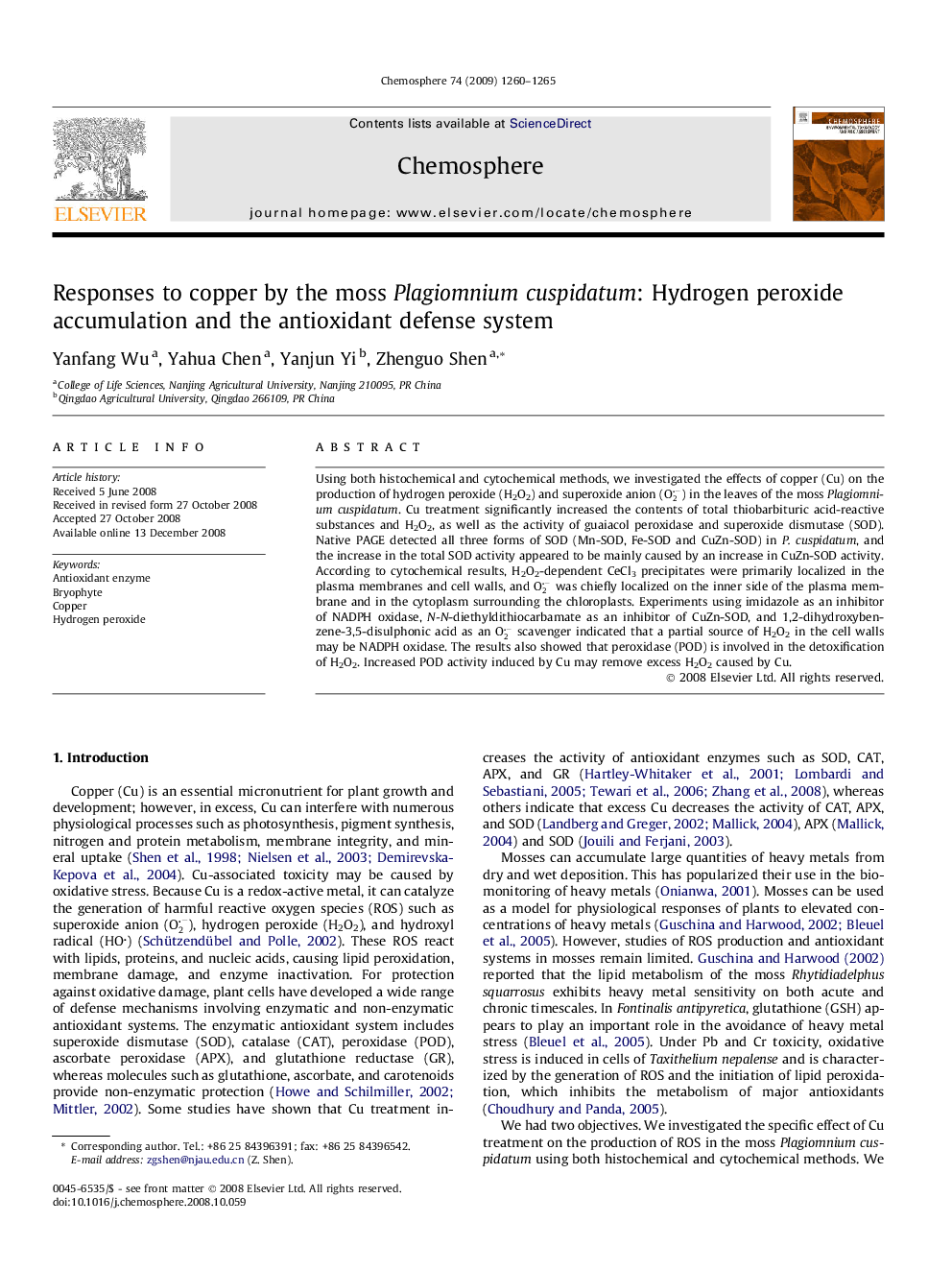| کد مقاله | کد نشریه | سال انتشار | مقاله انگلیسی | نسخه تمام متن |
|---|---|---|---|---|
| 4413356 | 1307674 | 2009 | 6 صفحه PDF | دانلود رایگان |

Using both histochemical and cytochemical methods, we investigated the effects of copper (Cu) on the production of hydrogen peroxide (H2O2) and superoxide anion (O2-) in the leaves of the moss Plagiomnium cuspidatum. Cu treatment significantly increased the contents of total thiobarbituric acid-reactive substances and H2O2, as well as the activity of guaiacol peroxidase and superoxide dismutase (SOD). Native PAGE detected all three forms of SOD (Mn-SOD, Fe-SOD and CuZn-SOD) in P. cuspidatum, and the increase in the total SOD activity appeared to be mainly caused by an increase in CuZn-SOD activity. According to cytochemical results, H2O2-dependent CeCl3 precipitates were primarily localized in the plasma membranes and cell walls, and O2- was chiefly localized on the inner side of the plasma membrane and in the cytoplasm surrounding the chloroplasts. Experiments using imidazole as an inhibitor of NADPH oxidase, N-N -diethyldithiocarbamate as an inhibitor of CuZn-SOD, and 1,2-dihydroxybenzene-3,5-disulphonic acid as an O2- scavenger indicated that a partial source of H2O2 in the cell walls may be NADPH oxidase. The results also showed that peroxidase (POD) is involved in the detoxification of H2O2. Increased POD activity induced by Cu may remove excess H2O2 caused by Cu.
Journal: Chemosphere - Volume 74, Issue 9, March 2009, Pages 1260–1265